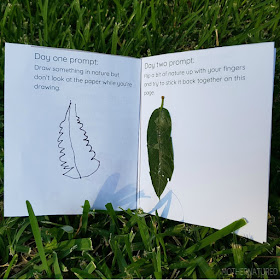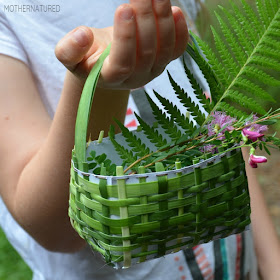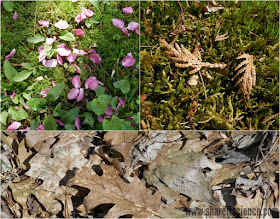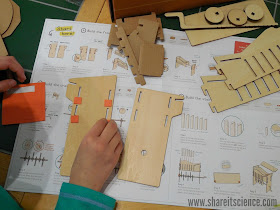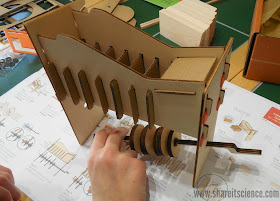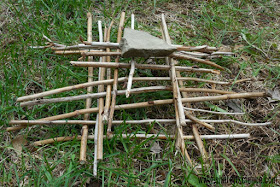For updated information on the April 2024 solar eclipse, visit this page!
August 21st, 2017 is much anticipated for American astronomers and backyard stargazing enthusiasts. A total solar eclipse will occur, visible across the continental United States for the first time in almost 40 years! Although it is not a rare event for the Moon to temporarily block the Sun by moving between the Sun and the Earth, it is that it seldom happens where we can easily view it.
Read on to find the answers to your burning questions: What is an eclipse, exactly? Will I be able to see it where I live? How can I watch a solar eclipse safely? In addition to other educational astronomy resources.
This post contains affiliate links, please see disclosures for more information.
What is an eclipse?
There are two types of eclipses, lunar and solar. As you may have guessed from the names, one has to do with the Moon and one with the Sun. A lunar eclipse occurs when the Earth passes between the Sun and Moon, blocking the Sun's light and casting a shadow on the Moon. A solar eclipse occurs when the Moon passes between the Earth and the Sun. In this case, the Moon blocks the Sun's light from reaching Earth. Check this link out for a
simple lesson and visual modeling activity on eclipses.
Here's a diagram to help clarify this description. Notice how little of the Earth is affected by the Solar Eclipse in the top half of the diagram. This is why it is rare that we get a chance to see it. The Lunar Eclipse, in the bottom half of the diagram, is visible from any place on Earth that is facing the moon at that time. This is why it is easier to catch a glimpse of a lunar eclipse.
The reason that the Sun appears completely eclipsed during a solar eclipse is that from Earth the Sun and the Moon are seen as the same size in the sky. Although the Sun is really much larger, their distances from the Earth give the appearance that they are the same size.
What Should You Expect to See on August 21st, 2017?
If you reside in the contiguous 48 states of the U.S. you will be able to see at least a partial solar eclipse. A few lucky states will experience the total eclipse. For the path of the eclipse, and to find out where you'll be able to see it, check out this
solar eclipse map.
There are no major U.S. cities that fall in the zone of totality, or the area where the Sun will be completely eclipsed, however, if you live in Oregon, Idaho, Wyoming, Nebraska, Kansas, Missouri, Illinois, Kentucky, Tennessee, Georgia, or South Carolina, you might experience a total eclipse.
During the total eclipse the Moon will hide the Sun from view. When this happens, we can see the Sun's corona, the outer layers of plasma around the Sun. The corona will appear to be a beautiful ring of light around the edges of the Moon.
During the total eclipse, the sky will darken so that the stars will again be visible, and it will seem like it is night time. Even the birds and other animals will stop making noise and prepare for night. The experience is sure to be beautiful and strange at the same time!
Some people may see the beautiful "diamond ring effect" which occurs just a few seconds before the Moon completely covers the Sun. For just a second you can see a ring shape and a flash of bright light in one portion of it. You might also see pink or reddish flickers, that are solar prominences, or little bursts of hot material that shoot out from the Sun.
Viewers of the partial eclipse will still be able to see a portion of the Sun, but will be able to see the Moon's shadow move over at least a portion.
Whether you are viewing the total or partial eclipse, it is important to remember safety! We'll cover safe viewing later in this post.
The eclipse will only last about 2 and a half minutes. This is a relatively short eclipse, as they can last up to 7 minutes. The timing will depend on your location. It will be longest along the central line of the eclipse's path, and become shorter the further you are from there.
Depending on where you are viewing, and what time zone you are in, the eclipse will take place either in the morning or afternoon. For example, those in Salem, OR will begin to see the eclipse at 9:05 AM, whereas those watching in Columbia, SC will see it begin at 1:13 PM.
How to Safely View the Solar Eclipse
Watching a solar eclipse requires a little bit of
planning. As you are aware, you should never look directly into the sun.
An eclipse is no exception!
DO NOT look directly at the eclipse with your naked eye and especially not through binoculars or a telescope as these only will magnify the sun's rays. Regular sunglasses do not provide enough protection for viewing the eclipse, even if it is just a partial eclipse!
So
how can you safely view the solar eclipse? The best option is to
project the image of the sun somewhere else. You can do this by building
a sun viewer, a pin-hole camera, or a solar funnel. These can all be
built with simple materials, many of which you probably already have at
home.
Build an easy pinhole projector with just a few materials
for safe solar eclipse viewing, and a lesson in how light travels!
For other excellent tutorials and videos on building these devices, check out the
Exploratorium's page on viewing a solar eclipse here.
You might also investigate these options:
Another option is purchasing
glasses designed for safe viewing of the eclipse. One option is
this great pack from Celestron that is better for a family of 4 and includes an eclipse guide. Be sure you are purchasing a safe pair! (The brands we have linked to are safe.)
Read this article to find out more!
Solar Eclipse Learning Resources
Will you be teaching about the eclipse, watching it with your homeschool group, astronomy group or camp? You might consider this excellent
solar science resource from the National Science Teacher's Association.There are also educational activities and links at
NASA's eclipse site.
Many professional and amateur astronomers will be getting together for "solar eclipse viewing parties" on the big day. Here are 13
solar eclipse celebrations you might want to check out. Plan your own eclipse party with these
tips from NASA. If you will be unable to view the eclipse in real life you can watch the
live stream of the celestial event here.
If you're worried about missing this one, you'll get another chance on April 8th, 2024 when another solar eclipse will be viewed across the United States, this time passing through a different set of states.
Looking for other sun activities? Try
building your own solar oven. Or these
solar experiments for kids.
Have a space obsessed kid? Check out these
great gifts for little astronauts and astronomers.



